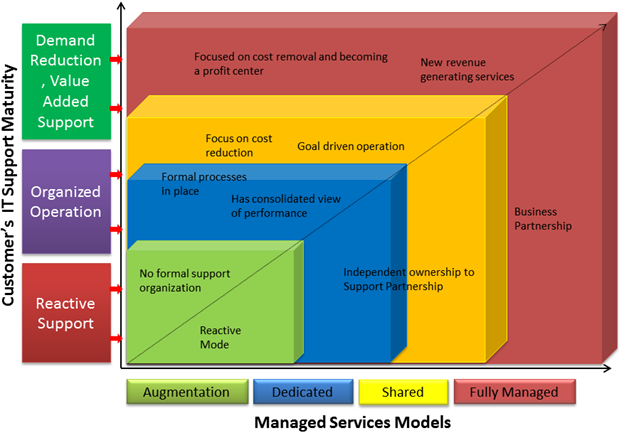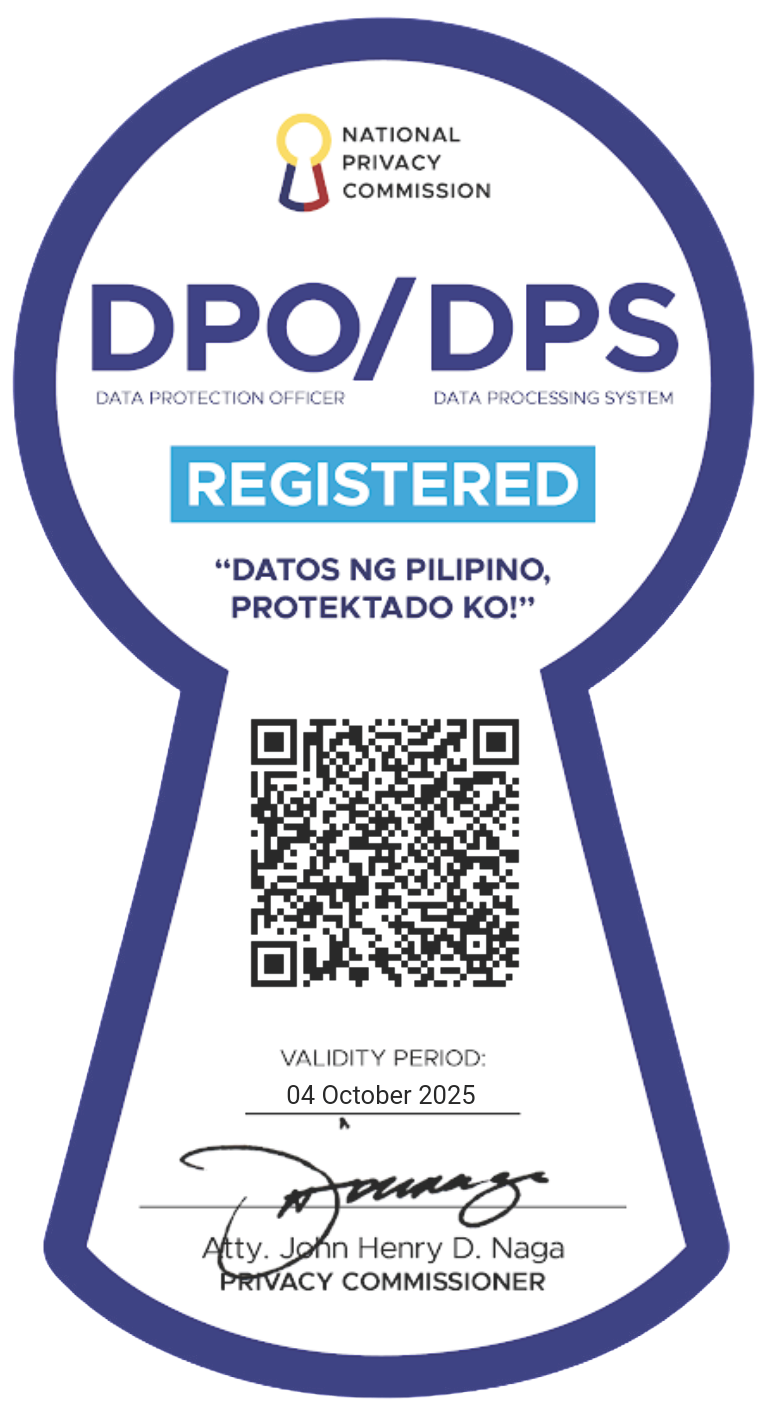
The Managed Services Journey – Moving from “Out-Tasking” into “Outsourcing” type of Service Model
Augmentation, Dedicated, Shared, Fully Managed
Under a managed services model, the provider is committed to delivering an “outcome” at a defined price versus an “input” as under the staff augmentation model. An input is simply the performance of an activity with no commitment that the activity will result in the desired outcome. The managed service model drives a measure of value based on planning, as the organization must define the requirement on a service and performance criteria basis. Pricing is tied to the outcome. Should the service requirement diminish or disappear, the associated costs react in kind. This provides the “scalability to demand” often sought in an augmentation model, but scalability that is tied to service. Linked to managed services is a service commitment. Under the augmentation model, the only service commitment is hours of work. Under the managed services model, we assume all of the risk of meeting the service commitment. The value creation is huge. As we assume the delivery risk at a fixed cost, we are highly incentivized to establish productivity measures required to meet the service commitment. This manifests itself in the implementation of tools (such as BMC Helix ITSM) and processes (ITIL), as well as extensive documentation, as we cannot afford to risk not meeting the service commitment by relying on individuals.
Documentation and process rigor also allow us to move work through a global delivery structure with ease. Through the application of documentation, tools and processes, we are able to deliver services reliably with fewer, more productive resources. Our managed services model therefore is structured to deliver a more commercially viable, low cost service offering to the organization. From the standpoint of what an organization really wants from IT, moving from the Augmentation to the managed services model delivers the following advantages: a predictable low price/cost service/outcome; scalability based on business demand; fewer delivery risks; and operational performance metrics tied to process excellence, documentation and outcomes.

The long-term nature of managed services models means the we are better able to plan, manage resources, balance workload across its workforce and allocate tasks throughout the delivery model. The result is a lower cost of delivery for a specific level of service. In general, under a managed services model we can deliver service at substantially lower cost than the cost of similar services delivered under an augmentation model.
The managed services (outsourcing) model can address other value destroying factors that typically plague IT departments as well. In a managed services(outsourcing) model, value capture for the provider is linked to the ability to move work to the best resource/best location, which requires that the provider document knowledge. Since this documentation contractually belongs to the client, the risk of knowledge loss is minimized for IT departments. Finally, because pricing is fixed under a managed services (outsourcing) model and many provider costs are driven by client behaviors, the provider is incentivized to help the client resolve key issues that impact performance, such as unnecessary complexity/diversity and a lack of adherence to standards.

